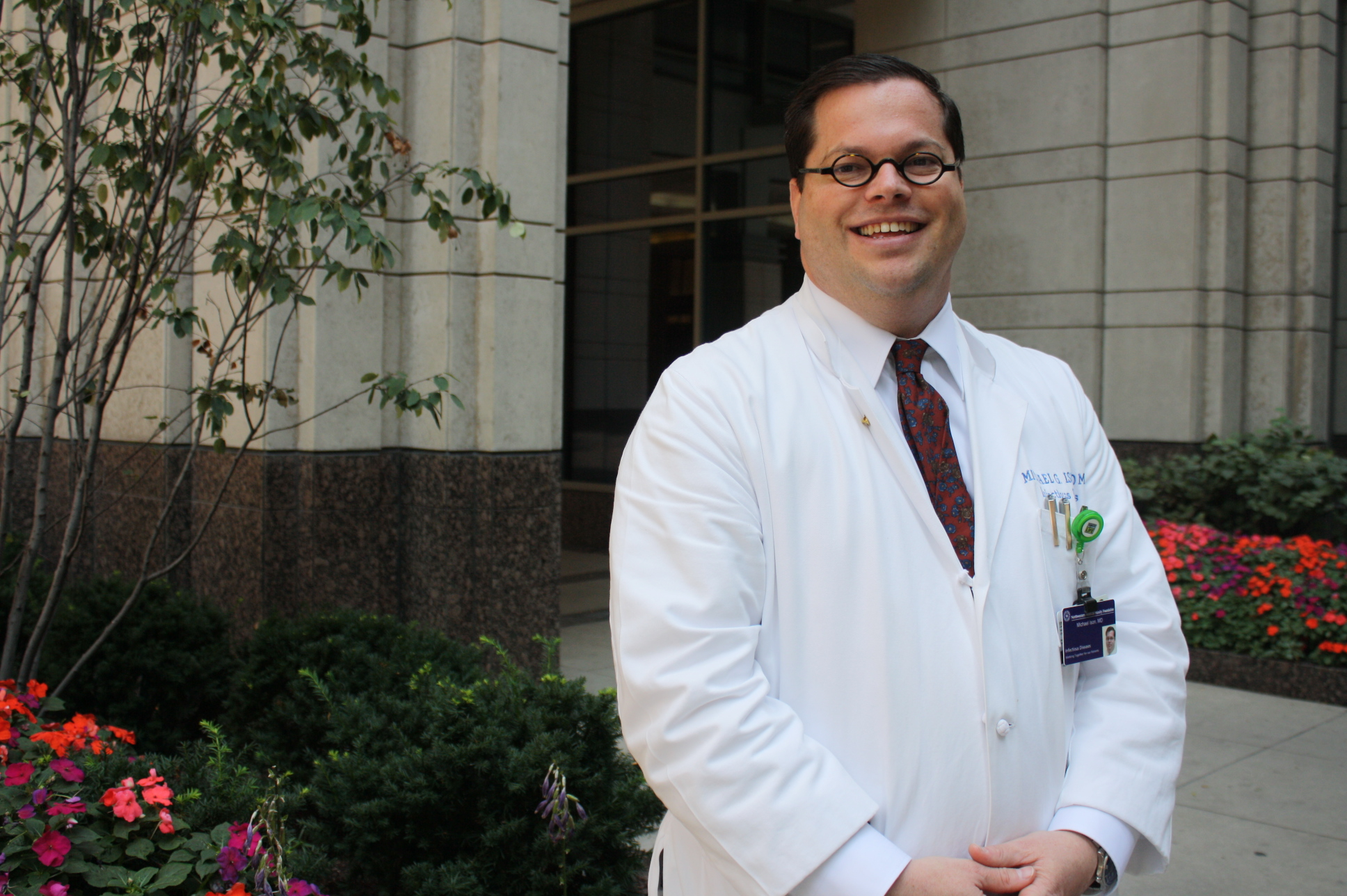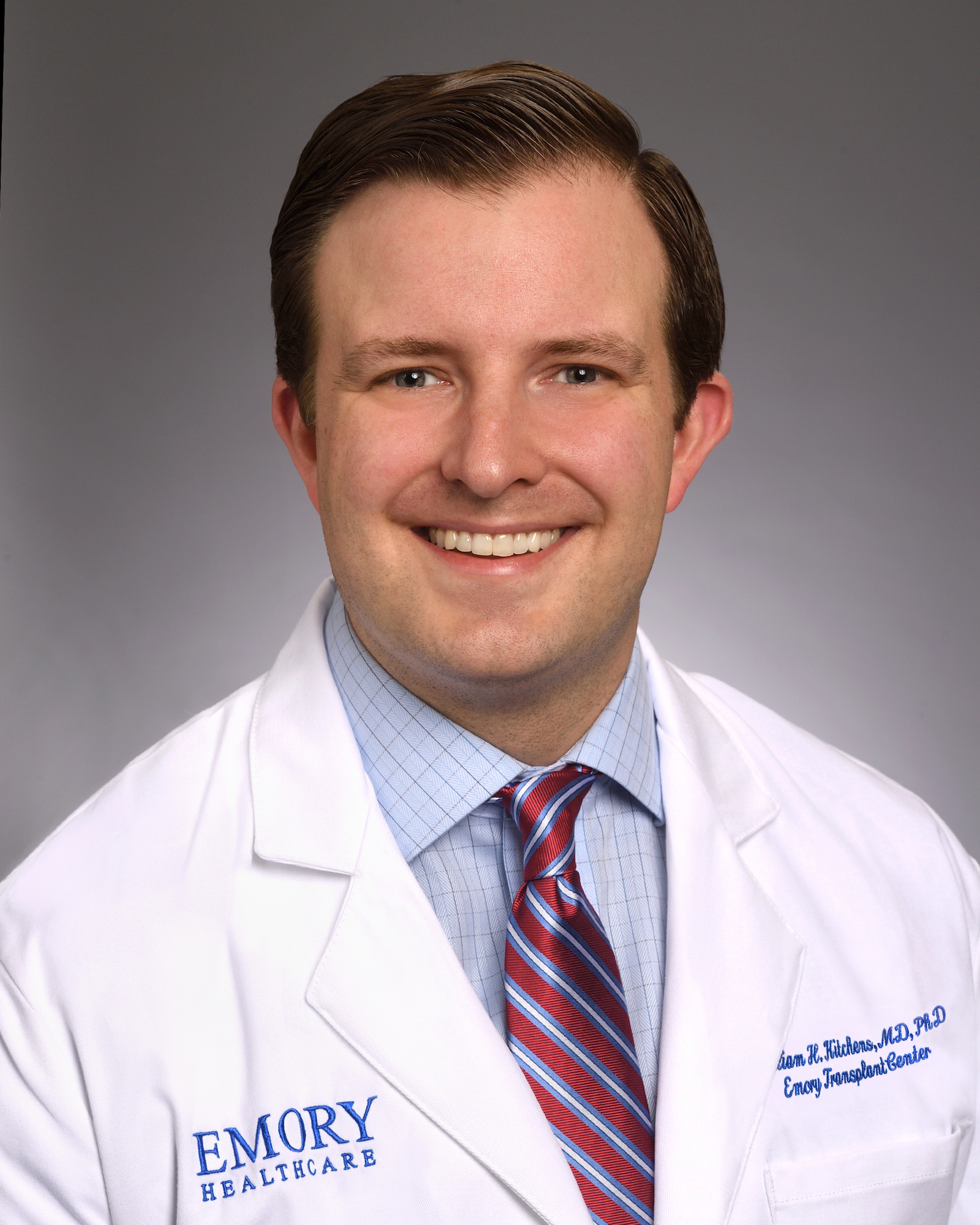
Advanced Transplant Provider (ATP) Certificate of Educational Achievement
ASTS recognizes the integral role Advanced Transplant Providers play in the field of transplantation and now provides an opportunity to recognize your commitment to the profession. ASTS offers a Certificate of Educational Achievement to Advanced Transplant Providers with a minimum of two years of experience in transplantation. The program is designed to further your professional growth through a series of educational modules relevant to the various roles of ATPs in transplantation.
Advanced Search This List
-
Contains 6 Component(s), Includes Credits
Allan Kirk, MD
Author: Allan Kirk, MD
Learning Objectives
1. Describe Basic Immunology – adaptive or specific immunity
2. Describe the relationship between antigen presenting cells and cytokines released by cells of the innate immune response
3. Describe the types of antigen presenting cells and the changes that occur following exposure to antigen
4. List the subsets of T cells and describe their function
5. Describe the distribution of MHC Class I and Class I molecules on immune cells and commonly transplanted organs
6. Describe the function of MHC Class I and Class II antigens
7. Define the first, second, and third signals involved in the initiation of an effective antigen specific response
-
Contains 5 Component(s), Includes Credits
Oya M. Andacoglu, MD
1. Understand the general classes/groups of agents and mechanism of action
2. Appreciate the concern, possible mechanism and unintended side effects
3. Identify CNI minimization and CNI free protocols as viable alternatives with focus updated data on benefits and risk compared to CNI based immunosuppression

-
Contains 5 Component(s), Includes Credits
Michael G. Ison, MD, MS
Author: Michael G. Ison, MD, MS
Learning Objectives:
1) Identify the behavioral and medical risk factors that qualify a donor as “increased-risk of disease transmission.”
2) Describe the sensitivity of NAT testing for HIV, HBV, HCV and quantitate the risk of transmission of new infection in the setting “window-period” negative test results.

-
Contains 5 Component(s), Includes Credits
William Kitchens, MD, PhD, FACS, FAST
Learning Objectives
1) Discuss the causes of long-term allograft failure
2) Investigate the pathophysiologic mechanisms of kidney allograft chronic fibrosis
3) Identify the different kinds of chronic kidney rejection (including chronic active T-cell mediated rejection and chronic active antibody-mediated rejection), and how they are diagnosed
4) Evaluate different treatment modalities of chronic kidney rejection
Author: William Kitchens, MD, PhD, FACS, FAST

-
Contains 5 Component(s), Includes Credits
Eric Grossman, MD and Peter Angelos, MD, PhD
Learning Objectives
1. Understand terminology of medical ethics and origins in Western philosophy
2. Describe the historical context of ethical principles in medicine
3. Apply the ethical principles to the practice of transplantation
-
Contains 5 Component(s), Includes Credits
Anji Wall, MD, PhD
Learning Objectives
1.) Understand donor autonomy and its establishment through informed consent
2.) Explain beneficence and non-maleficence as it applies to living liver donation
3.) Understand all the required aspects of informed consent. (reference guidelines)
4.) Understand the ethical challenges with living donation as it relates to the recipient’s condition (e.g pediatric recipient, alcoholic liver disease, HCC)

Anji Wall, MD, PhD
-
Contains 6 Component(s), Includes Credits
Allan Kirk, MD
Author: Allan Kirk, MD
Learning Objectives
1. Definition of acute and chronic allograft rejection
2. Cellular effector mechanisms of rejection
3. Variables influencing alloreactivity
4. Acellular effector mechanisms of rejection
5. Variables influencing alloantibody reactivity
6. Overview of complement activation
7. Mediators of intracellular communication
8. Co-stimulator molecules
-
Contains 5 Component(s), Includes Credits
Jeffrey Tessier, MD, FACP, FIDSA
- Identify typical opportunistic infections associated with transplantation
- Explain the time points post-transplantation certain types of opportunistic infections are usually observed
- State the management of immunosuppression for a transplant patient with an opportunistic infections
- Define the association between CMV infection, acute rejection, and long-term graft outcomes

Author: Jeffrey Tessier, MD, FACP, FIDSA
-
Contains 5 Component(s), Includes Credits
Timothy L. Pruett, MD
Timothy L. Pruett, MD
Learning Objectives
1). Understand the history of the development of the OPTN.
2). Describe the major provisions of NOTA.
3). Describe the major provisions of the Final Rule.
4) Understand the role of MPSC, UNOS, and CMS and how they interact in the regulation of transplant center oversight
-
Contains 5 Component(s), Includes Credits
Bertram L. Kasiske, MD
Bertram L. Kasiske, MD
Learning Objectives
1. Understand the organizational structure of OPTN and SRTR .
2. Understand the services provided by the SRTR and its role in feedback to the transplant center and policy development.
3. Understand the methods by which the OPTN uses Program Specific Reports (PSRs) in transplant center oversight
-
Contains 6 Component(s), Includes Credits
Allan Kirk, MD
Author: Allan Kirk, MD
Learning Objectives
1. Describe Basic Immunology – adaptive or specific immunity
2. Describe the relationship between antigen presenting cells and cytokines released by cells of the innate immune response
3. Describe the types of antigen presenting cells and the changes that occur following exposure to antigen
4. List the subsets of T cells and describe their function
5. Describe the distribution of MHC Class I and Class I molecules on immune cells and commonly transplanted organs
6. Describe the function of MHC Class I and Class II antigens
7. Define the first, second, and third signals involved in the initiation of an effective antigen specific response -
Contains 5 Component(s), Includes Credits
Oya M. Andacoglu, MD
1. Understand the general classes/groups of agents and mechanism of action
2. Appreciate the concern, possible mechanism and unintended side effects
3. Identify CNI minimization and CNI free protocols as viable alternatives with focus updated data on benefits and risk compared to CNI based immunosuppression
-
Contains 5 Component(s), Includes Credits
Michael G. Ison, MD, MS
Author: Michael G. Ison, MD, MS
Learning Objectives:
1) Identify the behavioral and medical risk factors that qualify a donor as “increased-risk of disease transmission.”
2) Describe the sensitivity of NAT testing for HIV, HBV, HCV and quantitate the risk of transmission of new infection in the setting “window-period” negative test results.

-
Contains 5 Component(s), Includes Credits
William Kitchens, MD, PhD, FACS, FAST
Learning Objectives
1) Discuss the causes of long-term allograft failure
2) Investigate the pathophysiologic mechanisms of kidney allograft chronic fibrosis
3) Identify the different kinds of chronic kidney rejection (including chronic active T-cell mediated rejection and chronic active antibody-mediated rejection), and how they are diagnosed
4) Evaluate different treatment modalities of chronic kidney rejectionAuthor: William Kitchens, MD, PhD, FACS, FAST

-
Contains 5 Component(s), Includes Credits
Eric Grossman, MD and Peter Angelos, MD, PhD
Learning Objectives
1. Understand terminology of medical ethics and origins in Western philosophy
2. Describe the historical context of ethical principles in medicine
3. Apply the ethical principles to the practice of transplantation -
Contains 5 Component(s), Includes Credits
Anji Wall, MD, PhD
Learning Objectives
1.) Understand donor autonomy and its establishment through informed consent
2.) Explain beneficence and non-maleficence as it applies to living liver donation
3.) Understand all the required aspects of informed consent. (reference guidelines)
4.) Understand the ethical challenges with living donation as it relates to the recipient’s condition (e.g pediatric recipient, alcoholic liver disease, HCC)
Anji Wall, MD, PhD
-
Contains 6 Component(s), Includes Credits
Allan Kirk, MD
Author: Allan Kirk, MD
Learning Objectives
1. Definition of acute and chronic allograft rejection
2. Cellular effector mechanisms of rejection
3. Variables influencing alloreactivity
4. Acellular effector mechanisms of rejection
5. Variables influencing alloantibody reactivity
6. Overview of complement activation
7. Mediators of intracellular communication
8. Co-stimulator molecules -
Contains 5 Component(s), Includes Credits
Jeffrey Tessier, MD, FACP, FIDSA
- Identify typical opportunistic infections associated with transplantation
- Explain the time points post-transplantation certain types of opportunistic infections are usually observed
- State the management of immunosuppression for a transplant patient with an opportunistic infections
- Define the association between CMV infection, acute rejection, and long-term graft outcomes

Author: Jeffrey Tessier, MD, FACP, FIDSA
-
Contains 5 Component(s), Includes Credits
Timothy L. Pruett, MD
Timothy L. Pruett, MD
Learning Objectives1). Understand the history of the development of the OPTN.
2). Describe the major provisions of NOTA.
3). Describe the major provisions of the Final Rule.
4) Understand the role of MPSC, UNOS, and CMS and how they interact in the regulation of transplant center oversight -
Contains 5 Component(s), Includes Credits
Bertram L. Kasiske, MD
Bertram L. Kasiske, MD
Learning Objectives
1. Understand the organizational structure of OPTN and SRTR .
2. Understand the services provided by the SRTR and its role in feedback to the transplant center and policy development.
3. Understand the methods by which the OPTN uses Program Specific Reports (PSRs) in transplant center oversight